Every AR, VR, MR, and XR headset we saw at CES 2023
WOW. That’s all we can say about the sheer number of augmented reality glasses and virtual reality headsets and mixed reality thingys and extended reality whatsits being announced at CES 2023. Wow.
In all shapes, sizes, and colors, these gadgets aim to bring real-time translation, navigation, gaming, conversation, and more to your field of view. Some we were able to test out, and where possible we’ve included analysis of fit, wearability, and utility.
But with this range of gear, we clearly couldn’t look at or through them all. And with an Apple entry on the horizon, this market is clearly crowded. Who could possibly succeed? Where should you invest that hard-earned dollar? Here’s a quick rundown of the newest announcements from the giant technology show.
TCL RayNeo X2
The TCL RayNeo X2 glasses share a lot of similarities with other recent AR smart glasses to appear on the scene – like the Nreal Air and VITURE One XR Glasses. Just like those that have come before, they look like a chunky pair of specs, but the lenses have been outfitted with a pair of Micro-LED optical waveguide displays that provide the wearer with a personal heads-up display, and in the glasses’ stems you’ll find speakers so you can hear audio through them, too.
Unlike the old Google Glass, they feature screens in both lenses, which is vital to making the information look clear, and fit within the world around you. What ‘optical waveguide displays’ means is that the screens are actually in the frame of the glasses, and project down through the lens. Angled grooves in the glass reflect the light towards your eyes, so there are no pixels or electronics in (or in front of) the glass itself. If you need corrective lenses, you can get them, and you can actually swap the lenses in the future without having to get rid of the electronic part.
It works exactly as described by TCL – you can see through them perfectly well, but information floats in front of your eyes, too. And that information is clear and sharp, and can be shown across a broad range of your vision, from top to bottom, left to right. It’s never too far from the center, though, so you don’t have to move your eyes a lot and strain to look at anything. It’s clearly been very carefully thought out in terms of the all-important ergonomics. Read more about the TCL RayNeo X2.
HTC Vive XR Elite
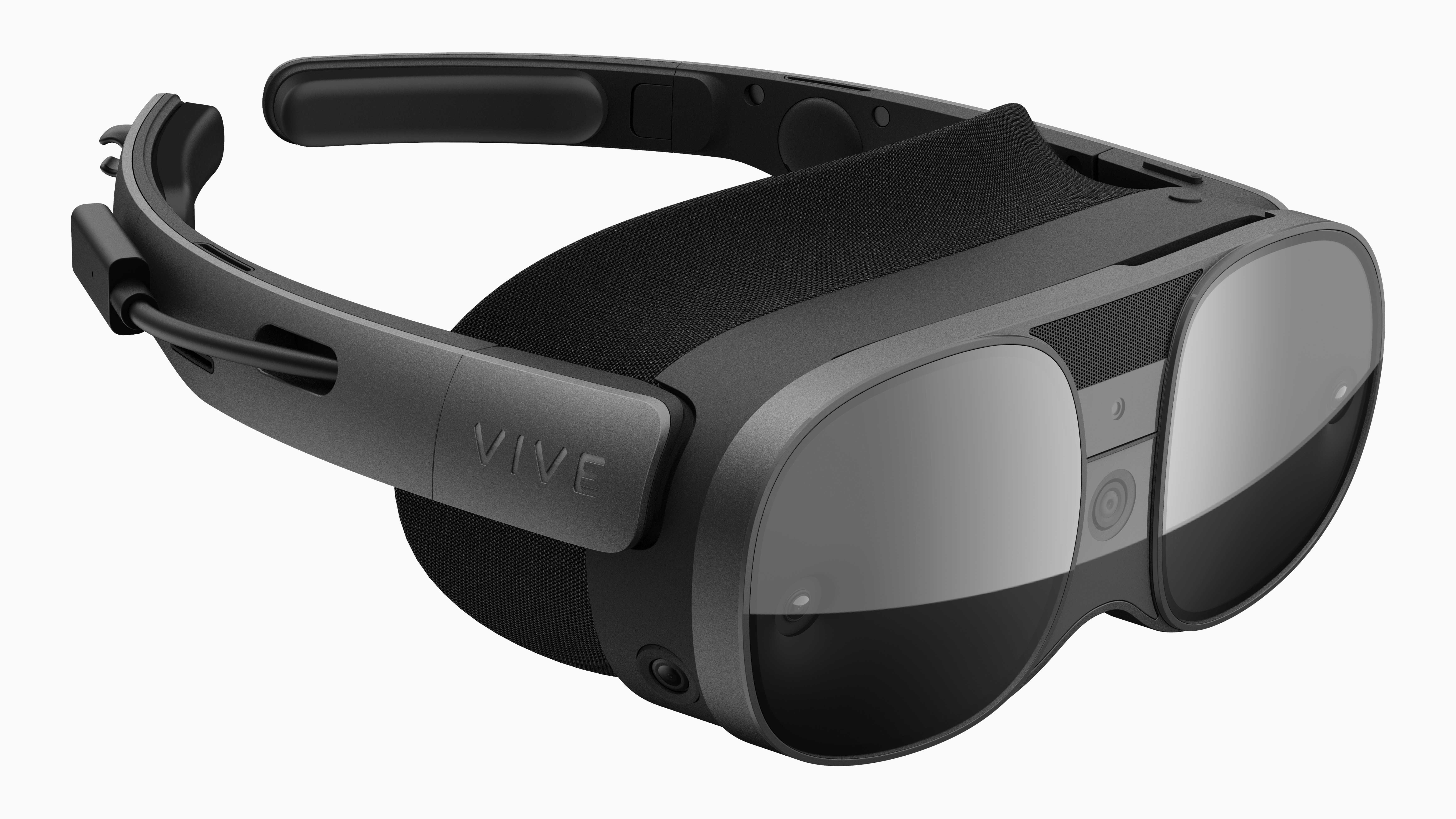
HTC is at the bleeding edge of immersive and augmented experiences for everyone. The original device you might be familiar with was VR-only and needed beacons placed around a room to know your position; the new HTC Vive XR Elite is fully self-contained. It’s also redesigned to be lighter and support AR as well as VR.
HTC set up a half dozen experiences for TechRadar to try, but first we had to get acclimated to the new headgear, which now looks more like goggles attached to a cushiony head ring. You tighten it on your head with a big knob in the back. As with the Magic Leap headset, you’ll have to remove your glasses to use it. In the HTC Vive XR Elite, little dials around the lenses let you adjust focus, and you can slide the eyepieces apart or closer together to match your own pupillary distance. In the display, you see a green grid visual that helps you position the lenses properly.
None of this was hard or took more than a moment. For further headset support, there’s a thin rubber band that runs over the top of your head. I found the fit extremely comfortable. Read more about the HTC Vive XR Elite.
PlayStation VR2
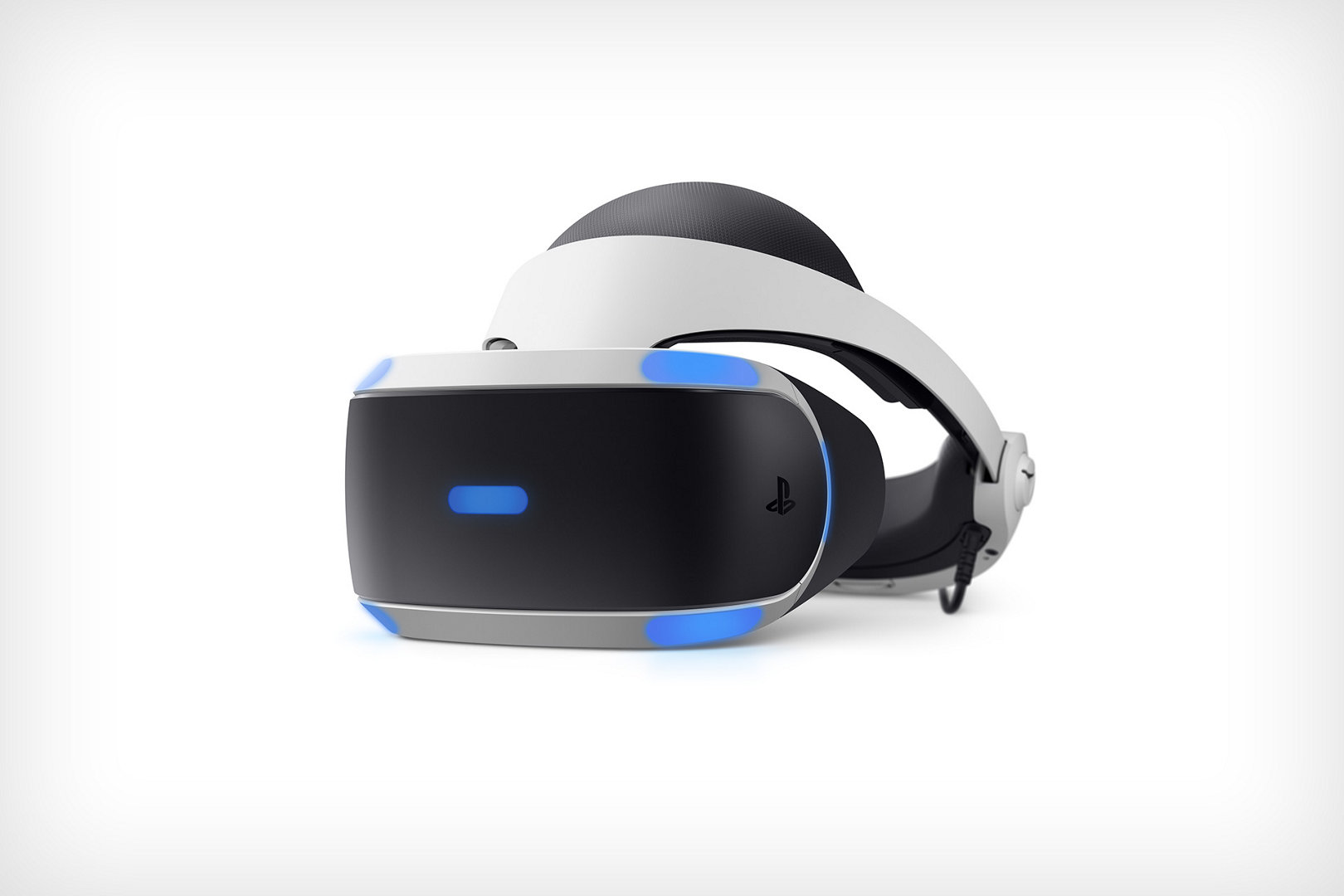
TechRadar didn’t get to test the VR2, but our friend’s at Tom’s Guide did. Here’s what they had to say in their hands-on review:
“With the PlayStation VR 2, Sony is attempting to bring PC-level performance to its console-based VR platform. To wit, the PS VR 2 for the PS5 has a higher resolution than its predecessor and runs smooth thanks to the addition of eye trackers that enable foveated rendering, which lets the headset dedicate more processing power to the area where your eyes are looking and less processing power to the areas you aren’t focusing on.
Also impressive is the fact that the PS VR 2 doesn’t need the PlayStation Camera or the PS3 Move Motion controllers that the original PS VR used. The PS VR 2’s new upgraded controllers feel better in the hand and can be tracked by the sensors on the headset itself – solving two of our biggest issues with the original headset with one elegant solution. This could easily be one of the best VR headsets yet, at least for console gamers.
We have our reservations about the headset which is a bit disconcerting considering the high $549 price – but fans of next-level VR experiences on consoles have a lot to be excited about when the PS VR 2 comes out in mid-February.” Read more about the Playstation VR 2.
Lumus Z-Lens
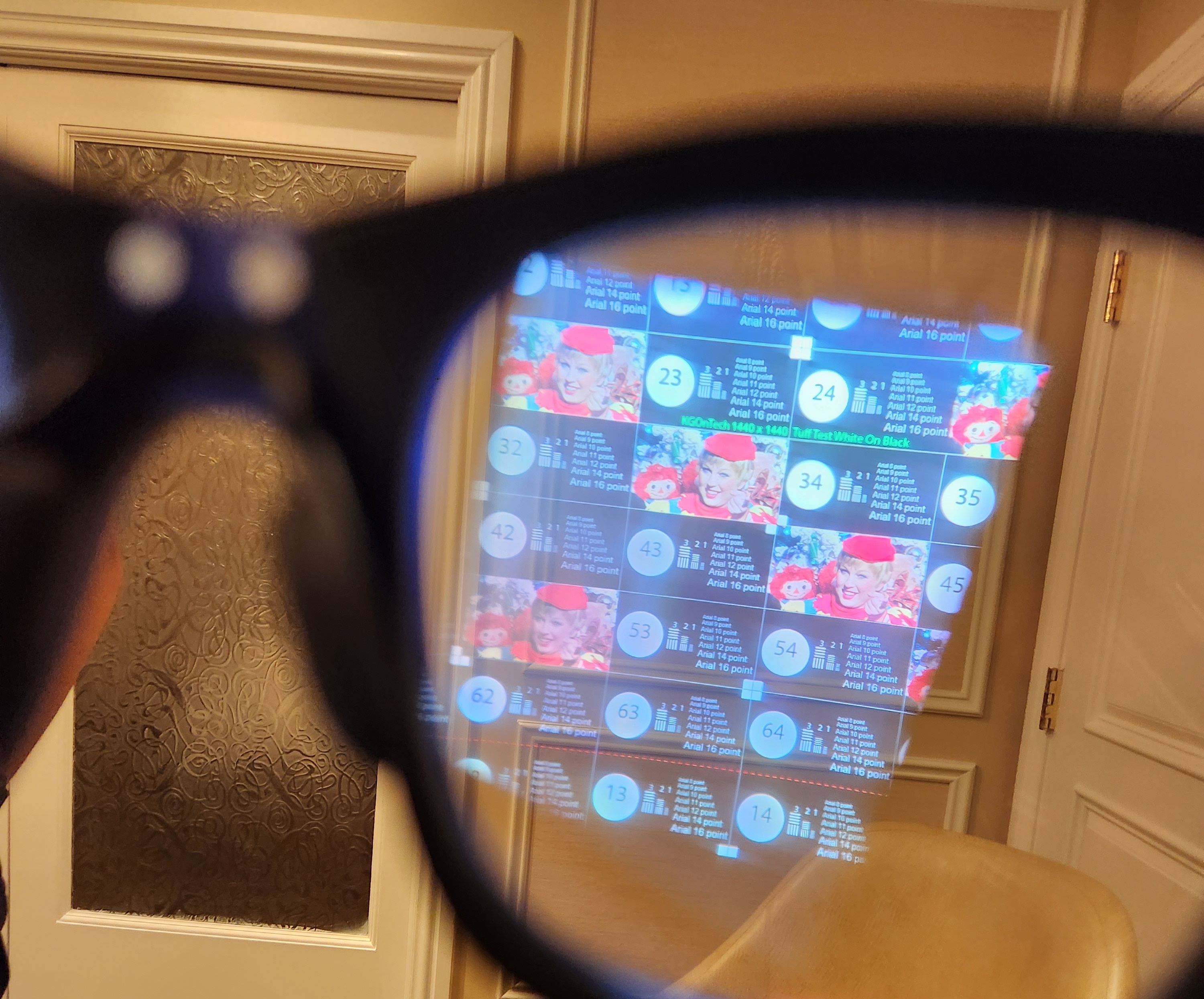
Lumus makes a lens that’s nothing short of perfect. Or a waveguide, we should say, the technical term for projecting an image onto or into the glasses in front of your face. “There are two approaches to waveguides,” Dave Goldman, VP of marketing for Israeli-based Lumus, told TechRadar. “One is called diffractive, and that’s the other guys. And I mean everybody else, I’m talking about some of the in-house teams at the tier one companies as well as every competitor of Lumus currently.”
That includes, for example, the Nreal Air and VITURE One XR Glasses – and the brand new TCL RayNeo X2 glasses. Goldman’s company uses a different technology, reflective waveguides, which allow for vastly brighter images and much more efficient waveguides, meaning lower power solutions. It means the lenses are thin enough and bright enough to fit in ordinary glasses. The Z-Lens image is created by a projector module that sits in the frame; it has an LED and an LCOS display and a prism. Light from the projector is sent into the waveguide, where two sets of mirrors embedded in the lens expand that image to fill your field of view. So mirrors, it’s all mirrors. Really, really smart mirrors.
To try them out, Goldman gave us a pair of chunky, blue, Buddy Holly-style glasses with flexible wrapped cords coming out of each temple. We put them on – they’re light and feel much like ordinary glasses. And there, hovering before our eyes, was a perfectly readable, perfectly bright and clear grid with pictures and text – a simple demonstration of what the Lumus Z-Lens can do. Everything worked flawlessly, bright enough to be visible in ordinary sunlight, clear enough to see through, and completely invisible to anyone looking at us. Read more about the Lumus Z-Lens.
Magic Leap 2
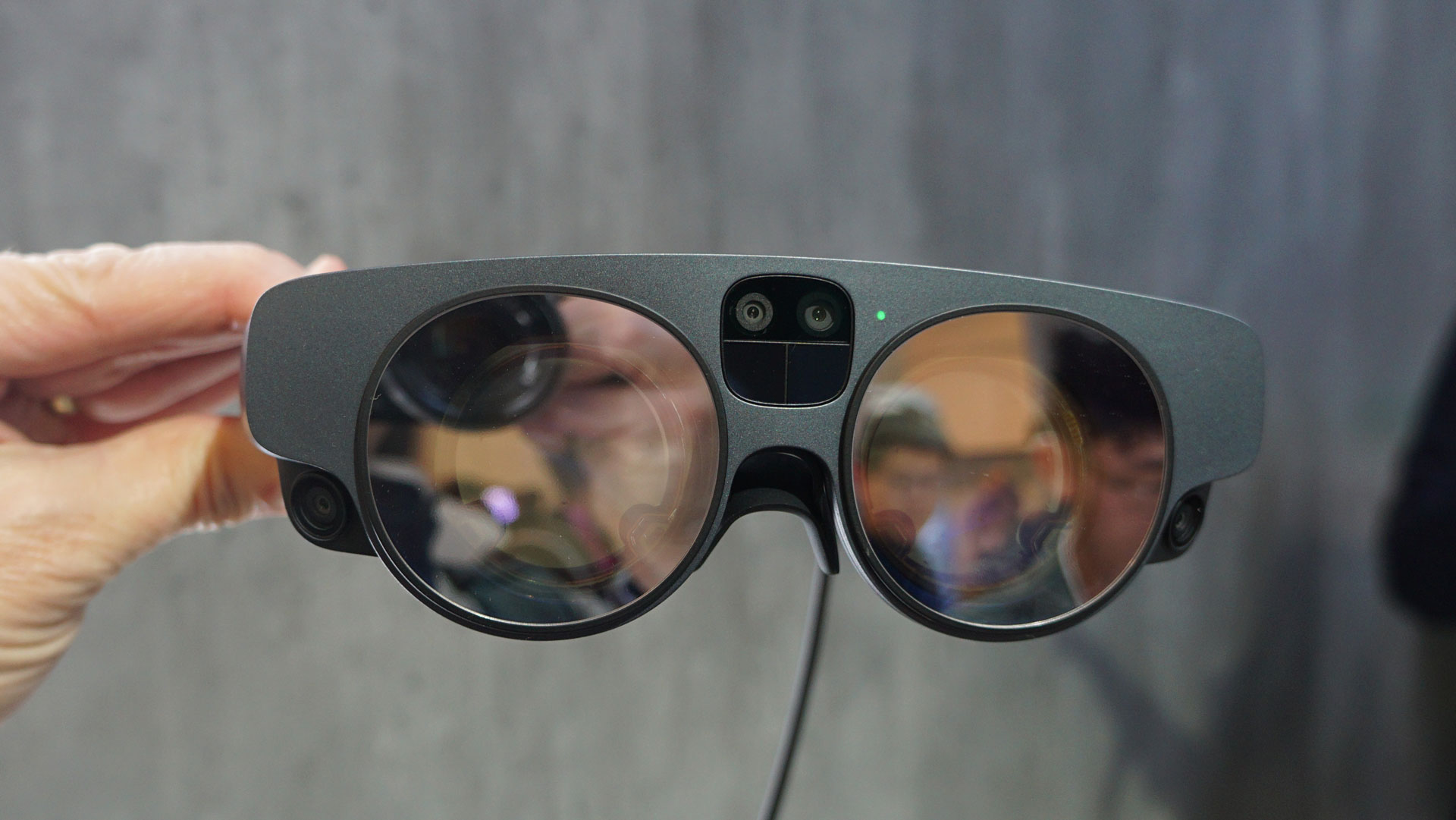
To test the latest from Magic Leap, TechRadar met company CTO Julie Larson Green, a once-retired Microsoft Windows legend who is helping steer Magic Leap’s transition from inscrutable and over-promising wunderkind to a practical and purpose-drive AR headset for industry, factories, disaster response, and more. As we talked inside the packed booth about Magic Leap’s early promise, Green told me, “The tech was too early, and the consumer scenarios were not as clear.”
Enterprise, though, is a different story. Industry, factories, and even medical theater, “They’re used to wearing things on their faces.” Green encouraged me to suit up with the latest headset, the Magic Leap 2, which Is 50% lighter and smaller than the original. It also has a powerful new custom AMD SoC.
Unlike the new HTC Vive XR Elite and the Meta Quest Pro, Magic Leap 2 retains its svelte figure by putting the battery and processor in a separate puck that you can wear on your belt. This has the effect of making the headgear lightweight and quite comfortable to wear. It also means you’ll have a cable running from the puck to your head, and I could feel the puck on my hip. Read more about the Magic Leap 2.
Vuzix Ultralite
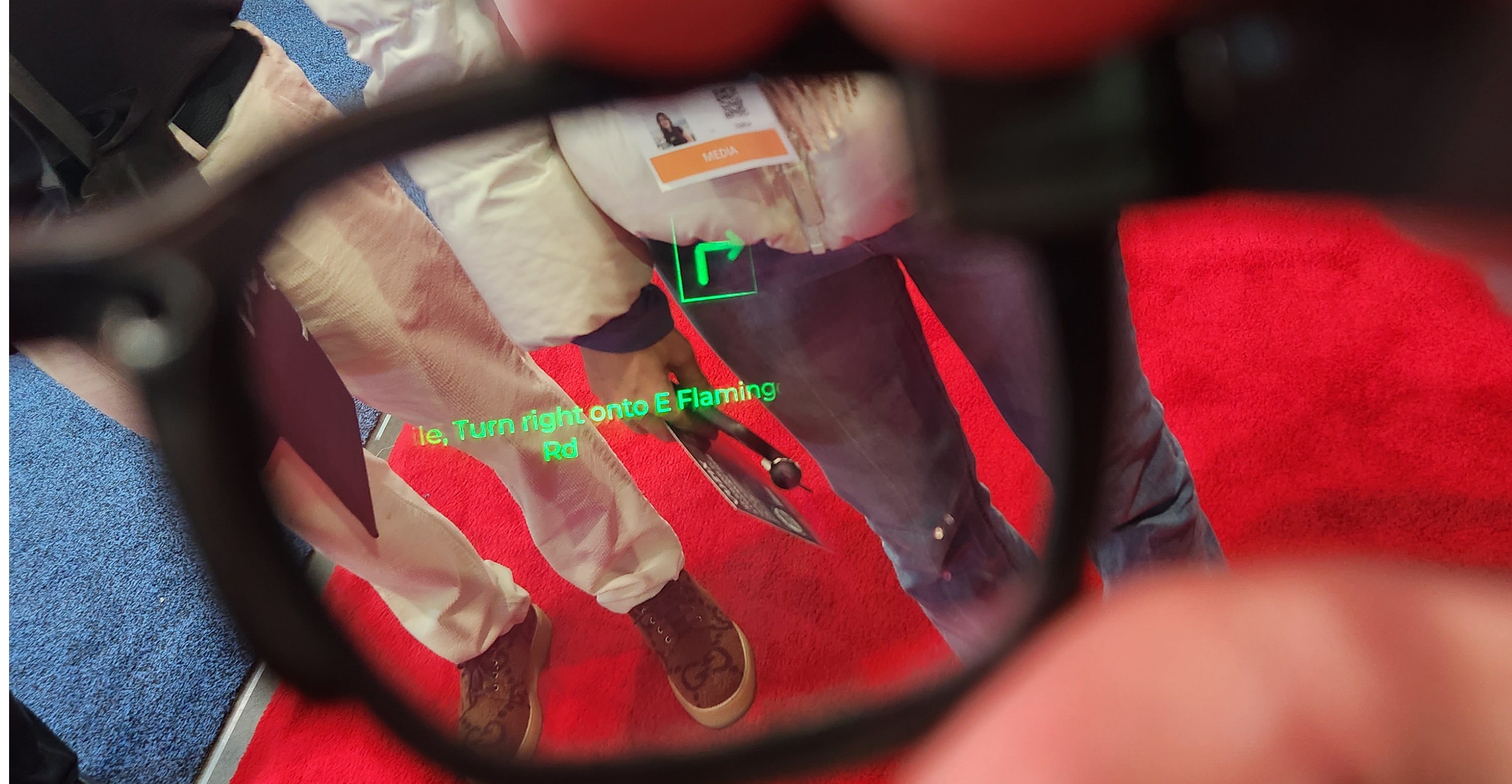
At CES 2023, Vuzix unveiled new Ultralite AR glasses, ordinary-looking plastic frames with a tiny projector tucked in one stem and a tiny battery and Bluetooth radio in the other. Combine that with Vuzix’s waveguides – a layer in the glasses that bends the projector’s light into your line of sight – and you’ve got ordinary-looking glasses that do the extraordinary.
We put on the Vuzix Ultralite, and saw in the corner of the right lens a line of green text, the sort you’d see on old mainframe computers in the movie War Games. It was sharp, perfectly readable, and bright as day. It was a real-time transcription of what another Vuzix staffer was saying; the device is equally adept at displaying directions, with arrows to indicate where you should travel, workout status, text messages, and so on.
This is not, to be clear, 30fps full-color video. But the Vuzix Ultralite is here today, and it is affordable and likely exactly what you’re looking for. It doesn’t have a massive battery pack (or a cord to a battery you shove in your pocket) because it works directly with your phone, thanks to a simple Bluetooth connection. It’s not passing a great deal of video across that connection, so there’s no need for that cable either. It’s just a pair of ordinary-looking glasses that tap into the power of your phone. Read more about the Vuzix Ultralite.
Somnium VR1
Somnium Space is a metaverse platform from the Czech Republic. At CES 2023, the company unveiled Somnium VR1, an open source high end PCVR headset with high resolution displays, special custom non-fresnel, crystal clear lenses, eye tracking, hand tracking and a modular design allowing users to change, add or modify many parts of headset.
Additionally, Somnium Space gives access to the majority of sensors, allowing advanced users to create custom mixed-reality experiences.
Viture One
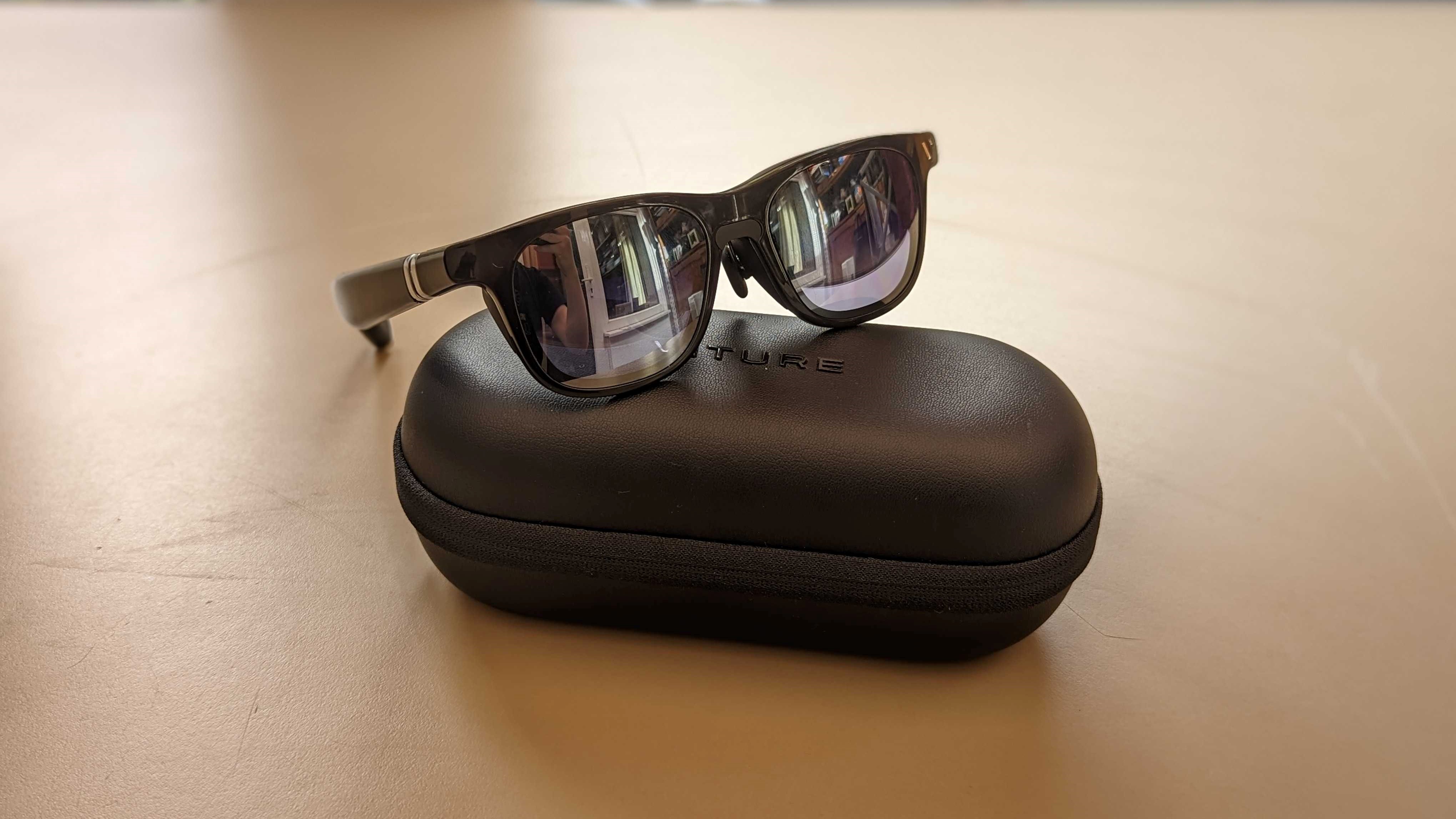
The Viture One XR Glasses are like a portable projector for your face. Slap them on, connect them to a compatible smartphone, laptop, or games console and their full-HD OLED displays will virtually project a 120-inch screen before your eyes.
We say virtually project as onlookers won’t be able to see the screen floating in mid-air that you can see. Instead, these AR glasses provide you with a private personal home-cinema experience complete with surround sound – and you can take them anywhere you go.
However, while the glasses promise a lot they don’t really deliver thanks to their lacking design. They don’t quite sit right on your face, meaning too much light can be let in and spoil the experience. In addition, the edges of the image can get quite blurry, making playing games and watching shows a bit of a challenge. Read more about the Viture One XR Glasses.
AjnaXR
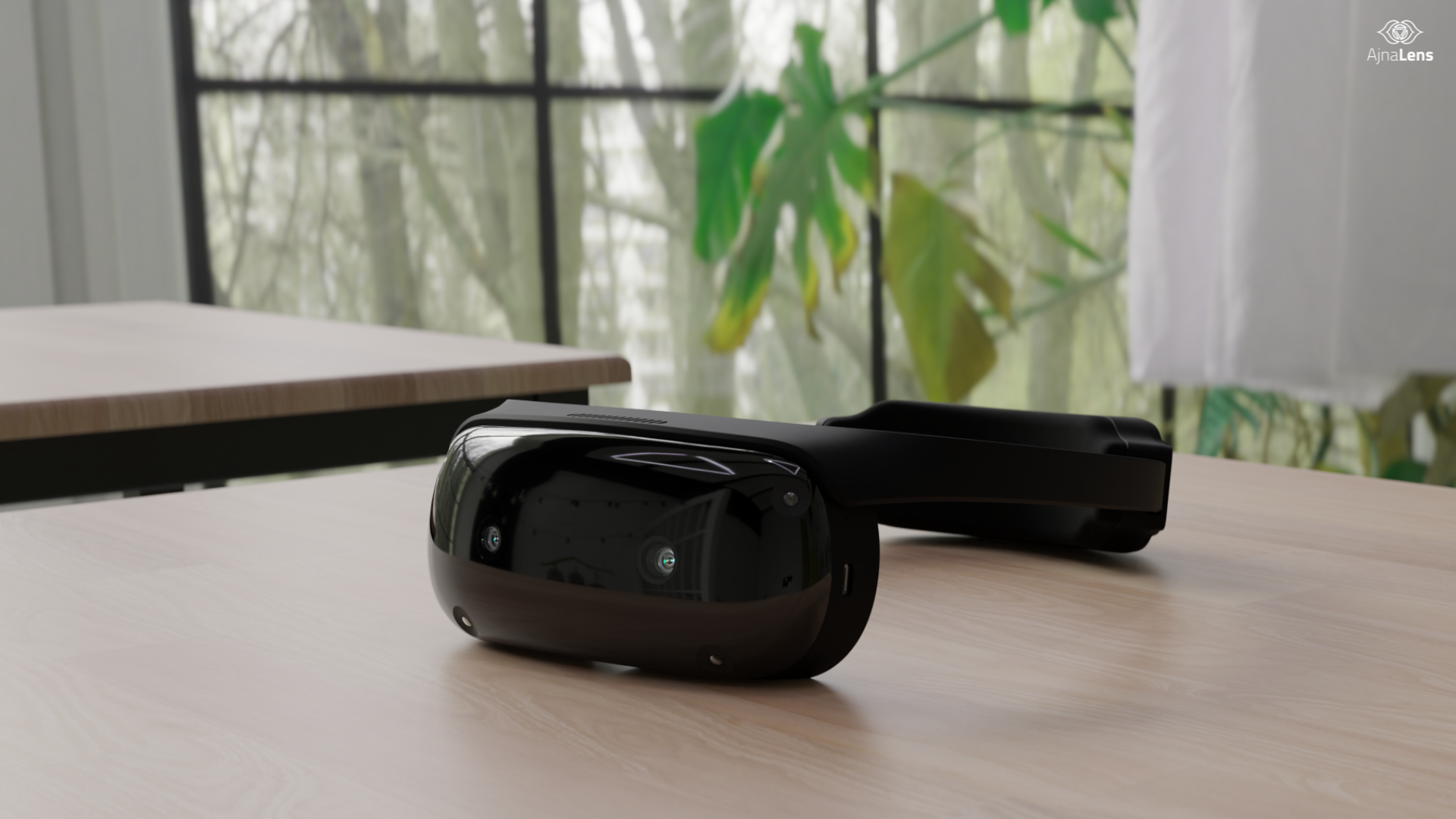
Developed in secrecy over the last several years, at CES the Indian company AjnaLens unveiled its entry into the advanced mixed reality headset world, called AjnaXR.
AjnaXR wasn’t built to play games, the company explains, but rather transform the way you find a job and keep it. This particular headset is designed for learning, offering the wearer a wide range of immersive courses; combine the headset with haptic gloves the company also sells and you’ll be able to get hands-on training remotely – which is one of the least discussed and most practical uses of virtual and mixed reality.
For all the latest Technology News Click Here
For the latest news and updates, follow us on Google News.
